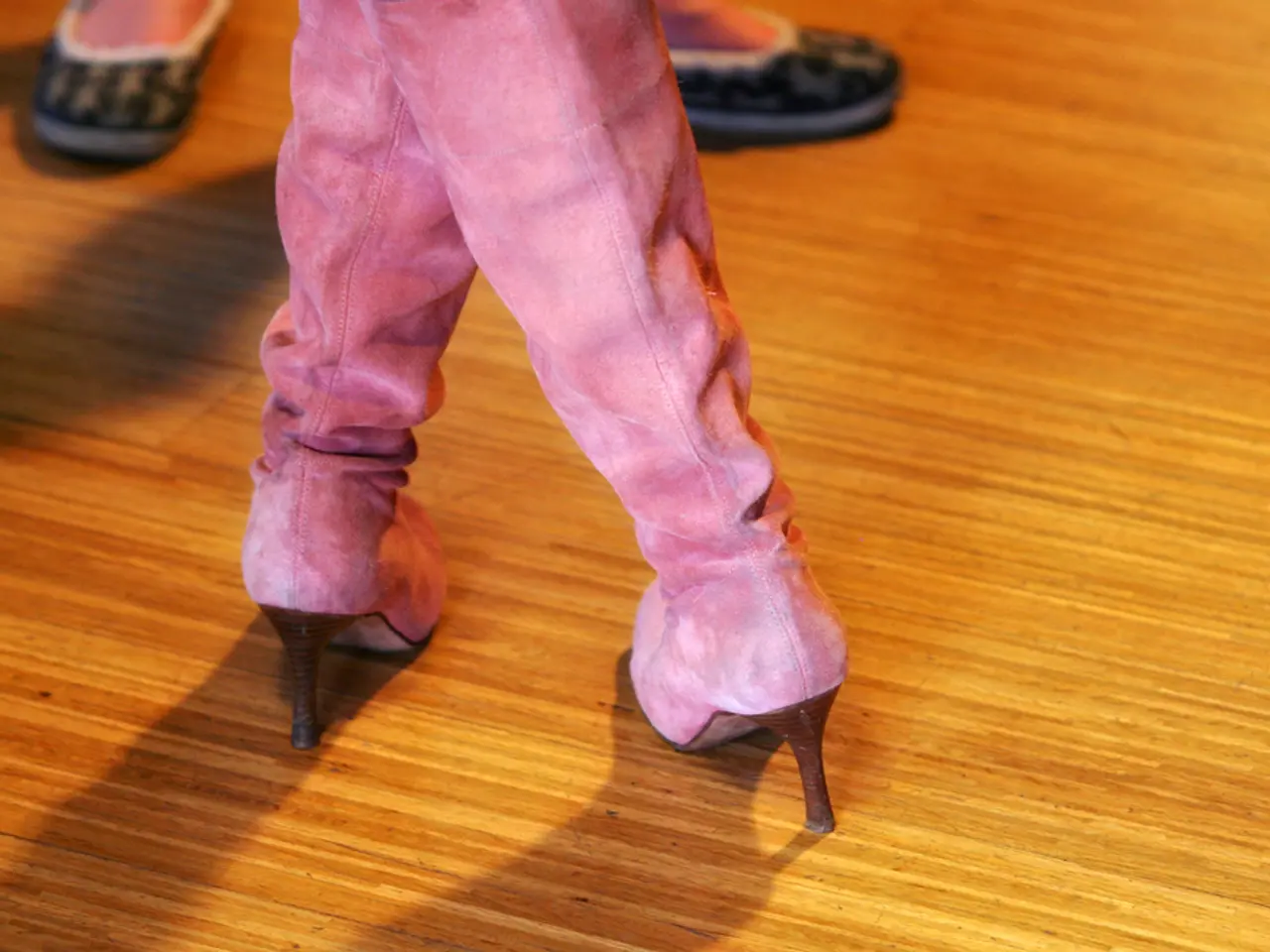Winter Remedies for Chapped Heels, as Recommended by Skin Specialists
Dry, cracked heels can be a common and uncomfortable foot problem, often caused by a variety of factors. Here are some common causes and effective home remedies to help treat and prevent this condition.
Without adequate hydration, skin becomes rough and can crack. Harsh weather conditions, such as cold, dry air and indoor heating in winter, or hot weather and dry air, strip away moisture from the skin, contributing to dryness. Improper footwear, including ill-fitting or non-breathable shoes, cause friction and pressure, leading to calluses and cracks. Poor hygiene and foot care, neglecting washing, exfoliating, and moisturizing or over-washing with harsh soaps, can worsen dryness. Medical conditions like eczema, psoriasis, diabetes, and thyroid disorders impair skin moisture retention and repair, while aging reduces natural oils and thinner skin increases susceptibility to dryness and cracking. Prolonged standing or pressure, including during pregnancy, adds stress to heel skin.
Fortunately, there are several effective home remedies for treating dry, cracked heels. Soaking feet in warm (not hot) water for 15-20 minutes softens the skin, followed by gently exfoliating with a pumice stone to remove dead skin without harsh scrubbing. Regular moisturizing, preferably after bathing, with a rich, fragrance-free moisturizer restores hydration and prevents cracking. Wearing well-fitting shoes and socks reduces friction and supports moisture retention. Avoiding harsh soaps and hot water helps maintain natural oils, while using moisturizing gel-lined socks overnight can enhance hydration.
Lifestyle adjustments, such as taking breaks from standing long hours and reducing exposure to extreme weather conditions, can also help. For persistent or severe cracked heels, especially if caused by underlying medical conditions, consulting a healthcare professional or podiatrist is advised.
Experts recommend applying a heavy-duty moisturizer after exfoliating dry feet. Flip-flops, sandals, and open-back shoes can worsen dry, cracked heels by increasing friction. Urea is an ingredient that holds onto moisture and breaks down overly thick skin, helping to heal and hydrate dry, cracked heels. Overproduction of keratin, a protein that forms the hard, outer layer of skin, in response to stressors like frequent walking, standing, and certain medical issues can lead to dry, cracked heels.
Aquaphor Healing Ointment and Vaseline Petroleum Jelly are recommended moisturizers for dry, cracked heels. For more severe cases, chemical exfoliants, like alpha hydroxy acids (AHAs) and beta-hydroxy acids (BHAs), can also be used to loosen the bonds between dead skin cells and gently exfoliate the feet.
Maintaining a solid foot care routine can prevent bigger problems in the future. Simple home remedies, such as soaking the feet in warm water and using a pumice stone to gently exfoliate, can often relieve dry skin on the feet. Switching to more cushioned, supportive closed-back footwear can help evenly distribute weight and prevent dry, cracked heels. Moisture-wicking cotton socks can prevent irritation and keep feet comfortable. Applying moisturizers at night, before bed, and covering feet with saran wrap or socks can help prevent the balm from rubbing off.
Humectants (like hyaluronic acid) and occlusives (such as shea butter, panthenol, and petroleum jelly) are effective for treating dry, cracked heels. Untreated heel fissures (cracks) can get deeper and cause pain when standing or walking, increasing the risk for infection.
In conclusion, dry, cracked heels are a common foot problem caused by environmental factors and lifestyle habits. Adopting proper foot care habits, combined with targeted moisturizing and exfoliation, can effectively treat and prevent dry, cracked heels.
- Proper self-care, including regular hydration and protection from harsh weather conditions, can help maintain the health and beauty of skin, preventing conditions like dry, cracked heels.
- Skin-care products that contain humectants and occlusives, such as hyaluronic acid, shea butter, and petroleum jelly, are effective in treating dry, cracked heels.
- Home remedies for dry, cracked heels include soaking feet in warm water, exfoliating with a pumice stone, regular moisturizing with rich moisturizers, and wearing well-fitting shoes and socks to reduce friction and support moisture retention.
- News and lifestyle articles frequently discuss the importance of health-and-wellness practices, such as self-care, skin care, and foot care, in maintaining overall beauty and health, including tips for treating and preventing dry, cracked heels.




